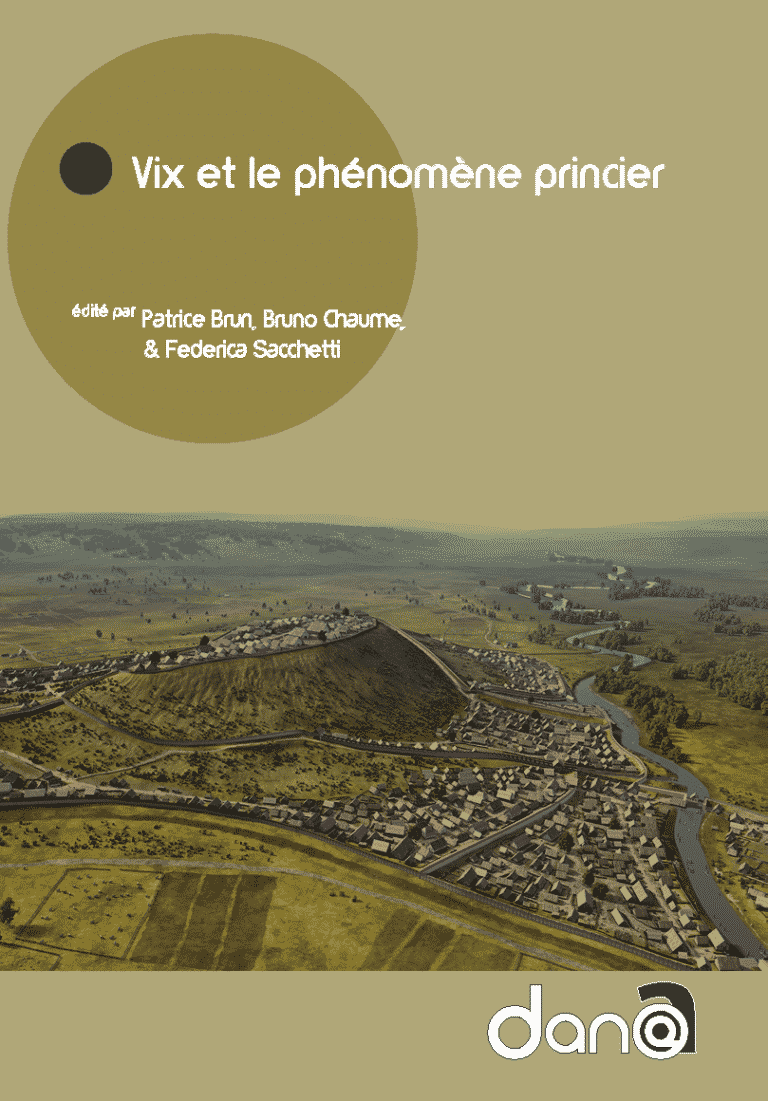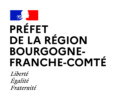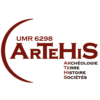Cet ouvrage est dédié à Axel Kahn.
Sommaire •••
1• Préface,
par Marc Talon, Conservateur régional de l’archéologie, DRAC de Bourgogne-Franche-Comté
2• Les approches conceptuelles du phénomène princier en Celtique nord-alpine au cours des 25 dernières années /
Conceptual approaches over the past 25 years to the princely phenomenon in the Celtic world north of the Alps,
par Patrice Brun, Bruno Chaume, Federica Sacchetti
3• Entre l’État et la chefferie simple : le complexe aristocratique de Vix/le mont Lassois,1
par Bruno Chaume, Ariane Ballmer, Philippe Della Casa, Norbert Nieszery, Thomas Pertlwieser, Walter Reinhard, Katharina Schäppi, Otto Urban, Alexandra Winkler
4• The large scale geomagnetic survey at Mont Lassois (2013-2017),
by Lukas Goldmann, Rainer Komp, Friedrich Lüth
5• Le complexe funéraire de Lavau et la question du pôle aristocratique de Troyes, au Ve siècle a.C.,2
par Bastien Dubuis, Émilie Millet, Vincent Riquier
6• Le complexe princier de Bourges : nouvelles perspectives sur la chronologie et le territoire,3
par Laurence Augier, Sophie Krausz
7• Le site de Lyon et ses céramiques importées à la fin du VIe s. et au Ve s. a.C. : marqueurs de circuits commerciaux, indices de mixité ethnique et de mutations socio-culturelles,4
par Stéphane Carrara, avec les collaborations de Éric Bertrand, Clémence Mège, Guillaume Maza
8• La Heuneburg réévaluée : nouvelles fouilles et découvertes (2000-2020),5
par Dirk Krausse, Nicole Ebinger-Rist, Manuel Fernández-Götz, Leif Hansen, Quentin Sueur, Roberto Tarpini
9• Mount Ipf in Southern Germany – The fortification, spatial organisation and territory of a “princely seat” of the Early Iron Age,6
by Rüdiger Krause
10• Regional coherence and group identities in the Hallstatt culture in the south-eastern Alpine region,7
by Biba Teržan
11• Les sépultures princières de Kleinklein en Styrie (Autriche),8
par Markus Egg
12• Des chefs guerriers aux seigneurs des terres et du commerce : les “princes” de la partie occidentale de la culture de Golasecca entre VIIe et Ve siècle a.C.,9
par Veronica Cicolani, Filippo Maria Gambari
13• The protohistoric agglomeration of Como, its necropolises and surroundings in the framework of the Golasecca culture,10
by Stefania Casini, Marta Rapi
14• Le fer des principautés : “l’économie du fer” dans le nord-est de la France au Hallstatt D et à La Tène A1,11
par Sylvain Bauvais, Marion Berranger, Philippe Dillmann, Alexandre Disser, Stéphanie Leroy, Philippe Fluzin
15• Préparations et pratiques de consommation alimentaire chez les Hallstattiens : l’apport de l’archéologie biomoléculaire,12
par Maxime Rageot
16• Food production and consumption at Iron Age central places in southern Germany in comparison with rural sites,13
by Manfred Rösch
17• L’élevage dans les résidences aristocratiques et leurs territoires au Premier âge du Fer dans le nord-est de la France (800-430 a.C.) : l’apport des données relatives aux modes de gestion des cheptels,14
par Sophie Goudemez
18• Intersectionality and elite identity in Iron Age west-central European mortuary contexts,15
by Bettina Arnold
19• Le “phénomène princier” et les importations méditerranéennes. Vers une nouvelle modélisation des contacts à longue distance dans l’arrière-pays européen : entre approches théoriques et données archéologiques,16
par Federica Sacchetti
20• Signification sociale et implications des importations grecques et étrusques pour les sociétés “princières” nord-alpines du Premier âge du Fer,17
par Patrice Brun, Bruno Chaume
21• Territoriality in the Iron Age,18
by Oliver Nakoinz
22• Une tendance inachevée vers l’urbanisation en Celtique nord-alpine (575-450 a.C.)19
/
An unfinished trend: towards urbanisation in Celtic regions north of the Alps (575-450 BC)
par Patrice Brun, Bruno Chaume
Contenus additionnels •••
 INA – Vase de Vix • ©INA
INA – Vase de Vix • ©INA Vase de Vix : un tournant dans la connaissance des Celtes • ©France 3 Bourgogne-Franche-Comté
Vase de Vix : un tournant dans la connaissance des Celtes • ©France 3 Bourgogne-Franche-Comté Côte-d’Or : visite du chantier archéologique de la tombe de la Dame de Vix • ©France 3 Bourgogne-Franche-Comté
Côte-d’Or : visite du chantier archéologique de la tombe de la Dame de Vix • ©France 3 Bourgogne-Franche-Comté Char de la Dame de Vix • ©Klaus Rothe
Char de la Dame de Vix • ©Klaus RotheMusée du Pays Châtillonnais – Trésor de Vix
Cette publication a été financée par le service régional de l’archéologie, la DRAC Bourgogne-Franche-Comté, le P.C.R. “Vix et son environnement” de l’UMR ARTEHIS 6298 Dijon et la Société archéologique et historique du Châtillonnais.
Résumé •••
Vingt ans après le colloque de Châtillon-sur-Seine sur les éphémères principautés celtiques, au cours duquel de vives critiques du modèle canonique des résidences princières des VIe et Ve siècles s’étaient exprimées, il était important de réexaminer la question à la lumière des spectaculaires découvertes effectuées depuis lors. Pour l’opinion qui était à l’époque devenue majoritaire, le modèle proposé par W. Kimmig accordait à ces sociétés un niveau de complexité politique trop élevé et leur prêtait des relations trop fréquentes et régulières avec des Cités-États grecques et étrusques.
Les découvertes récentes, à Vix, la Heuneburg, Bourges, Ipf, ou Lyon, ont conduit nombre de chercheurs, parfois les mêmes, à complètement inverser leurs critiques initiales en considérant ces grands établissements comme des centres urbains. Nous avons souhaité faire le point sur la documentation désormais disponible, mais trop partiellement connue, en donnant la possibilité de croiser les données à trois échelles à la fois spatiales et chronologiques. Il s’agit de l’échelle microscopique des composants physico-chimiques des objets fabriqués, et biologiques des restes végétaux et animaux conservés. Il s’agit aussi de l’échelle mésoscopique des établissements dans leur environnement local, juste avant, pendant, et juste après le phénomène social étudié. Il s’agit, enfin, de l’échelle macroscopique qui s’applique à l’ensemble culturel observé et aux sociétés alentour avec lesquelles des relations étaient entretenues.
L’ouvrage donne ainsi l’occasion de prendre connaissance des méthodes et théories mises en application pour obtenir, comparer et interpréter les faits, et de confronter les argumentaires.
Abstract •••
Twenty years after the colloquium at Châtillon-sur-Seine concerning the ephemeral Celtic principalities, which gave rise to lively discussions of the standard model applied to the princely seats of the 6th and 5th centuries BC, it is time to re-examine the question in light of the spectacular discoveries made since then. According to the then dominant opinion, the model proposed by Wolfgang Kimmig attributed too great a degree of political complexity to the princely communities and the contacts with the Greek and Etruscan city-states were considered too frequent and regular.
The recent discoveries at Vix, the Heuneburg, Bourges, Ipf, or Lyon have led many researchers, sometimes the same, to overturn their initial critical stance and view the large princely seats as urban centres. Here, we attempt to review the information now available but too incompletely known, by cross-referencing the data at three levels of spatial and chronological resolution. These scales are, first, the microscopic level, which refers to the physical and chemical components of manufactured objects, and the biological elements of the animal and vegetal remains that have survived. Second, the mesoscopic scale, which applies to the sites in their local environment, just before, during, and after the social phenomenon under scrutiny. Finally, the macroscopic scale, which relates to the entire cultural phenomenon and to the surrounding communities with which relationships were established.
This work provides the opportunity to examine the methods and theories applied to obtain, compare, and interpret the evidence, and to confront the arguments put forward.

Résumés des articles / Abstracts •••
- Abstract Entre l’État et la chefferie simple : le complexe aristocratique de Vix/le mont Lassois • The results of research conducted by the collaborative research programme (PCR) “Vix and its environment” have substantially contributed to the re-evaluation of the level of complexity of the Celtic principalities and have taken the issue much further than what had been envisaged at the time of the first Châtillon-sur-Seine colloquium in 1993. These innovative and spectacular results concern both the organisation of the settlement (a type of site presaging a town proper, and including palaces, built spaces and a hierarchy of buildings) and the defensive system (monumentalised ramparts), the whole set in its protohistoric environment. These elements are all crucial for defining what constitutes a complex chiefdom, making Vix/Mont Lassois the archetype of such a type of society.
- Abstract Le complexe funéraire de Lavau • The excavation at Lavau “Zac du Moutot” has provided the opportunity to study a vast funerary monument built in the 5th century BC on the site of earlier features. It includes two conjoint square enclosures and a tomb that can be qualified as « princely ». The subject, adorned with gold jewellery, was buried in a two wheeled chariot and accompanied by the deposit of imported tableware (cauldron, an Attic oenochoe, and silver accessories). This monumental tomb is one of the most impressive manifestations of the “princely phenomenon” and confirms the presence in the Troyes area of a power base, the organisation of which does not seem to be in accordance with the template provided by other princely residences. The multiscalar analysis of available data has led to a number of questions as to the position and the form of the main settlement, the existence of a fortified site in the area and the organisation of the territory.
- Abstract Le complexe princier de Bourges • Its geographical location at the western end of the Fürstensitze zone makes Bourges a special instance of the Hallstattian princely phenomenon. The initial topography of Bourges can now be reconstructed from recent research and updated excavation data. The late Hallstatt and La Tène A1 settlements can be told apart, providing fresh insight into the emergence, development and disappearance of the princely agglomeration. In the Hallstatt D2–D3, the territory was in the hands of an elite that controlled both a short- and long-distance trading network. Then during the La Tène A1 craft workers in districts on the outskirts of the princely residence mass-produced goods and seem to have benefitted from the repercussions of trade. The fourth century BC was a time of social and political development that meant it was caught between continuity and change.
- Résumé Le site de Lyon • Les quantités tout à fait exceptionnelles d’amphores et de céramiques importées mises au jour à Lyon, en contexte septentrional, permettent d’attribuer au site une fonction déterminante dans le réseau commercial massaliète et plus largement dans les réseaux d’échanges à longue distance du Ve s. Mais au-delà des aspects économiques, ce matériel peut également nous renseigner sur les habitants de l’agglomération du Ha D3/ LT A. Ainsi, plusieurs indices semblent témoigner d’une certaine mixité ethnique de la population et d’évolutions socio-culturelles, dont l’amplification des échanges commerciaux et culturels avec le domaine méridional constituerait le stimulus.
- Abstract La Heuneburg réévaluée • The Heuneburg on the upper Danube is one of the best investigated sites of Iron Age Europe. From the end of the 19thcentury, research focused on the rich Hallstatt burials from the environs, while the modern settlement excavations have been carried out since 1950. Despite this long research tradition, the excavations and surveys continue to produce new surprises. In particular, the pedestrian surveys of the last two decades, with their spectacular results, have radically changed our traditional image of the Early Iron Age centres of power. Modern research methods such as dendrochronology, isotopic analysis, geomagnetic surveys, LIDAR images, digital documentation, 3D laser scanning or the use of drones, increasingly provide new data and ideas.This article focuses on the novel information about the Heuneburg that we can group into six points: 1) The research on the lower town, which has delivered Late Hallstatt dates for the monumental earth banks, ditches and a stone gate; 2) The discoveries in the area of the eastern terrace, which include the remains of several individuals; 3) The identification of a large exterior settlement covering around 100 hectares and divided into different quarters, implying a process of social aggregation; 4) The spectacular grave from the Bettelbühl necropolis, which was recovered as a block and subject to a detailed excavation in the lab; 5) The latest excavations on the Heuneburg hilltop plateau, which have revealed evidence for a goldsmith’s workshop; 6) And finally the investigation of hillfort and rural settlements located in the environs of the Heuneburg.
- Abstract Mount Ipf • The renown of Mount Ipf extends far beyond the boundaries of southern Germany as an important archaeological monument belonging to the cultural sphere of early Celtic ‘princely seats’ in central Europe. Recent archaeological discoveries on Mount Ipf and in its surroundings have contributed substantially to research on the Iron Age in Europe. In 2000, after an interval of almost one hundred years, comprehensive and interdisciplinary research and excavations began again on Mount Ipf. The results of investigations have made it clear that the fortress on Mount Ipf held the exceptional position as an important centre of power in the Nördlinger Ries (located on the border between Baden-Württemberg and Bavaria). In the sixth/fifth centuries BC, during the late Hallstatt and early La Tène period, this fortified hilltop settlement belonged to the sphere of early Celtic ‘princely seats’ in central Europe. Through its central location it maintained direct relations via the Alps with the Mediterranean world.
- Résumé In the south-eastern Alpine region • Ce document présente un aperçu de la recherche récente dans l’arrière-pays de l’Adriatique du nord, s’étendant jusqu’au sud-est alpin et à la plaine pannonienne. Pendant le Premier âge du Fer, la géographie variée est reflétée par la diversité culturelle de la région, les deux exprimées dans les modèles d’habitat et les rites funéraires. Au début de Premier âge du Fer, plusieurs nouveaux groupes culturels ou entités ethniques se sont développées dans la région ; ils dérivent en partie des traditions de la civilisation des Champs d’urnes précédente et, dans une certaine mesure, ils évoluent sous l’influence de nouveaux arrivants et d’une nouvelle idéologie militaire se répandant depuis la région pontique jusqu’à l’Atlantique et qui sont connus sous le nom de “civilisation de Hallstatt”. Ces groupes culturels diffèrent dans leurs manières de vivre, et possèdent différents types d’habitat et modèles de peuplement, de systèmes de défense, de rites et pratiques funéraires (incinérations vs inhumations, nécropoles à tombes plates vs nécropoles tumulaires etc.). Ils se distinguent par une culture matérielle variée, différents costumes, armes, symboles de prestige ; en bref, ils diffèrent clairement dans leur identité. Les principales caractéristiques des trois groups culturels les plus importants et les mieux étudiés dans la région seront discutés dans cette perspective : tout d’abord, le groupe de Sv. Lucija/S. Lucia ou de Posočje, puis le groupe de Dolenjska ou Basse-Carniole, et enfin le groupe de Štajerska/Styrie ou le groupe styrien-pannonien, qui est aussi connu sous les noms de Kleinklein, Martijanec ou groupe de Kaptol. D’autres groupes dans la région, par exemple le groupe de Notranjska-Kras seront mentionnés seulement brièvement dans une comparaison entre les groupes. Le développement de ces groupes eut lieu dès leur phase de formation entre le IXe et le VIIIe siècle a.C. et culmina au VIIe et VIe siècle a.C. Quant à leur déclin, sa date diffère pour différentes raisons, en partie à cause des invasions des Scythes et leurs alliés au VIe siècle a.C., et en partie à cause des invasions celtiques du IVe et IIIe siècle a.C., suivies de l’expansion de la civilisation de La Tène.
- Abstract Kleinklein (Styrie) • The princely graves in the Hartnermichelkogel 1 and 2, Pommerkogel and Kröllkogel tumuli from a burial place separate from the rest of the Hallstatt necropolis located below the hillfort at Burgstallkogel near Kleinklein are the most richley furnished mounds of the Eastern Hallstatt culture, which spread across Eastern Austria, a part of Slovenia and Croatia and Pannonia. The contribution presents the chronological succession of the tumuli, their construction, furnishings and grave goods. It provides an outline of of the funeral rittual of the elite buried in Kleinklein in the span of a century and a half and defines the social status of the deceased as that of chieftains or kings.
- Abstract Les princes de la partie occidentale de la culture de Golasecca • Based on recent archaeological data and ancient texts, this paper aims to present the social organization of the Western facies of the Golasecca culture during the early Iron Age. The territorial and social transformations of the communities will be analyzed here, by considering all the internal and external factors that favored, in the VII century B.C. and especially during the following century, the emergence of the proto-urban center of Castelletto Ticino/Sesto Calende, before the major changes that marked the transition to the Second Iron Age. In fact, the urbanization process seems to be followed by a social transformation, where the power signs peculiar to the warlike world were transformed into a more diversified social structure that took its power and wealth from commercial practices, clientelistic relationships, and direct connections established with trading partners, mostly with the Etruscan traders.
- Résumé The protohistoric agglomeration of Como • La civilisation de Golasecca a représenté l’entité ethnoculturelle fondamentale comprenant la Lombardie occidentale, le Piémont oriental, le Tessin et de la vallée de la Mesolcina et qui s’est maintenue jusqu’aux invasions gauloises (388 a.C.) et à la romanisation (IIe-Ier siècle a.C.). La colonie protohistorique de Côme a été la principale et la plus durable à partir de la période du Protogolasecca. Les premières phases, du à G. IA et B, sont connues exclusivement à partir des nécropoles situées à l’intérieur et Protogolasecca à l’extérieur de la zone d’extension maximale des habitats. Dans les établissements, à quelques rares exceptions près, il n’y a pas de vestiges de cette période et la répartition des tombes suggère l’existence de petits habitats dispersés. Malgré le manque de preuves directes, attestant des structures de cette période, et à en juger uniquement par les matériaux redéposés dans les niveaux plus récents, les tombes ont disparu des zones où se situaient les habitats du VIIe siècle a.C. Cela signifie que l’organisation des espaces communs avait commencé et que l’habitat s’était étendu, même dans des endroits où il y avait auparavant de petites nécropoles.
Ce constat reflète une rupture avec la phase précédente. Les viatiques funéraires y sont plus riches et indiquent une plus grande stratification sociale. Les grands récipients en bronze ont des formes plus variées, la gamme d’objets en bronze s’élargit également et des contacts avec les zones voisines sont identifiés. Des groupes aristocratiques ont commencé à se former au VIe siècle a.C. Ils sont identifiés grâce à de fastueux objets funéraires, en particulier pour les femmes, et à ce stade, il apparaît que cette aristocratie a administré les zones communes de l’agglomération, jetant ainsi les bases du développement urbain. De nombreuses maisons du Ve siècle a.C. présentent des états qui remontent au VIe siècle a.C, dont certaines possédaient des fondations creusées dans le substrat rocheux comme à Rondineto, le secteur où habitaient les groupes les plus fortunés.Un modèle d’occupation dense n’est devenu clairement reconnaissable qu’à partir du Ve siècle a.C (G. III A), où l’on observe des espaces dédiés aux activités artisanales, marchandes et résidentielles et d’autres conçus pour les infrastructures communes. Il semble aussi y avoir eu des signes de la présence d’une autorité politique, attestée dans certaines inscriptions. L’habitat s’est contracté après 388 a.C., avec l’arrivée des Celtes transalpins, mais il n’a pas cessé d’exister, bien que la ville romaine appelée Novum Comum ait été fondée au bord du lac et non plus sur le site protohistorique. - Abstract Le fer des principautés • The role of the development of iron metallurgy in the implementation of societal transformations in Hallstatt D and La Tène A1 is questioned here by attempting to address regional particularities within a cultural background common to the entire Northwestern Alpine complex. First of all, the iron ore reduction activities are mainly located outside the western Hallstattian area, to the west and northwest. On the other hand, forging activities are mainly located in the North Alpine complex. It is at the time of the appearance of the « princely residences » (from Hallstatt C2 to Hallstatt D2 depending on the sector) that the first traces of forging activities are notable. It was not until Hallstatt D3 that important production centers and residential sites with permanent forging activities appeared.
Because of their more or less direct proximity to centers of primary iron production, some « princely residences » can benefit more from the wealth generated. The great majority of raw iron production being outside the areas directly controlled by the elites, the exchange networks that developed during this period allowed other regions to benefit from this booming economy.
It thus appears that iron played an important role in the development of the highly hierarchical societies surrounding the « princely residences ». Nevertheless, this role is not played at the level of a local exploitation of the ore but rather in the control of the exchange networks of raw or roughly compacted iron (bipyramid semi-finished products) and in its transformation into manufactured products. - Abstract Préparations et pratiques de consommation alimentaire chez les Hallstattiens • The study of organic substances from the complexes of Vix-Mont Lassois and the Heuneburg (6th to 5th centuries BCE) has enabled the reconstruction of consumption practices in the West Hallstatian region. Molecular and isotopic analyses were conducted on the organic residues trapped in 232 ceramic vessels, both locally produced and imported from the Mediterranean. The results testify to the use of a wide range of victuals and contribute to our understanding of the functions and uses of vessels. The characterization of substances of both animal (bee products, dairy products and adipose fats) and plant origin (oils, waxes, resin and tar) offers new lines of evidence into how these populations exploited their local environment and how they prepared food and beverages. The data collected also testify to the arrival of products from the Mediterranean (such as oils and wine), which could impact local practices. Applying a comparative approach to different areas within the Heuneburg and Vix Mont-Lassois further helped elucidate particular practices in relation to vessel type, socioeconomic context and time period. Notably, the study indicated that certain areas were associated with the production of specific foods and drinks while others were spaces for their consumption, pointing to the differential social status of producers and/ or consumers. Lastly, the study of organic residues also sheds light on a range of craft activities related to food and drink, from harvesting to processing, which could point to specific technical practices and forms of social organization. Thus, the investigation into the production and practices associated with food and drink reveal new socioeconomic markers at these two key early Celtic sites.
- Abstract Food production and consumption at Iron Age central places in southern Germany in comparison with rural sites • Long-term archaeobotanical research at central and rural sites of the early Iron Age as well as off-site provides insight into agriculture, land use in general and the cultural landscape of the period. Differences between central and rural sites and spatial patterns caused by environmental conditions became visible. Agrarian production was based on a broad range of crops, but imports to the centres were restricted to just a few. Judging from crop weeds, farmland was well maintained by tillage, crop rotation and fallow, preserving the soil’s fertility. Besides beer and imported wine, people drank mead. This drink was an important grave good. The honey for its production was gathered in the wild. Its pollen content reflects the cultural landscape, which was rather open, with extensive semi-open pastures, fields, fallow land and wetland. Differences between the central sites result from different soil qualities. Even at a site with a less suitable environment for agriculture like the Heuneburg, deforestation was intense and most probably caused mainly by extensive animal browsing. Looking at the deforestation indicated in the off-site pollen record along a transect from the Heuneburg to the south-east into the pre-Alpine lowlands to a distance of 65 km, no gradient of decreasing deforestation is visible.
- Abstract L’élevage dans les résidences aristocratiques et leurs territoires au Premier âge du Fer dans le nord-est de la France • Over the past thirty years, many rural settlements and many hilltop habitats have yielded animal bones. The availability of these assemblages and the necessity of improving knowledge about farming, hunting, and meat consumption have lead us to undertake synthesis work about domestic and wild fauna through a PhD study. A relatively large geographic area was considered, including the Grand-Est region (Lorraine, Alsace, Champagne-Ardenne), Bourgogne-Franche-Comté, and the east of the Centre region. Thus, the result is a corpus of nearly 160,000 individuals from seven rural settlements, seven hilltop habitats, and also Bourges « Avaricum ». The archaeozoological questions raised during this study are varied, but the differences in status of the two main types of settlement are one of the major issues, as well as eventual variations between different hilltop habitats.
- Résumé Intersectionality and elite identity in Iron Age west-central European mortuary contexts • De nouvelles données suggèrent que l’âge, l’identité basée sur le sexe (genre) et le statut ou rôle social font partie d’un système multidimensionnel servant à marquer l’identité dans les sépultures de l’âge du Fer en Europe. Par le passé, les études favorisaient un système de catégorisation sociale strictement binaire basé principalement sur le sexe mais il semble que le critère le plus important soit l’âge; quant au genre, il s’inscrit dans un éventail relatif à un contexte qui reflète le parcours de vie et les prouesses d’un individu plutôt qu’une série réductrice d’options limitées au masculin/féminin. Le degré d’influence du rôle et statut social sur l’expression de l’identité sexuelle dans les sépultures fait l’objet d’une discussion qui tient compte des données récemment acquises à la Heuneburg en faisant explicitement référence aux sépultures de Vix et Lavau.
- Abstract Le “phénomène princier” et les importations méditerranéennes • The birth of the « princely phenomenon », following the theoretical definition of W. Kimmig, is associated with that of the « phenomenon of Mediterranean imports », with all the conceptual debate that has marked the history of research on the Early Iron Age. The availability of an increasing amount of archaeological data and the refinement of research in recent years have made it possible to make progress in our knowledge of the long-distance exchanges that certainly characterised this historical phase. However, the invisibility for archaeology of a certain number of components of this complex phenomenon suggests that it should be understood globally using hypothetico-deductive tools. This article proposes an attempt to model the contacts between the societies of the North Alpine complex and those of the central-western Mediterranean between the end of Ha D1 and LT A. It is based on the analysis of transport amphorae using a multivariable and multiscalar method, which takes into account the variables of time, space and quantity according to the distance to the coastline on the scale of the entire western Hallstatt domain. It highlights the importance of the commercial effort made by inland routes to targeted destinations, the existence of a phasing of contacts and different modes of connectivity.This is an application test carried out on a category of imports chosen as an observable part of a more global reality that could be reproduced on all categories of traded goods observable by archaeology.
- Abstract Les sociétés “princières” nord-alpines du Premier âge du Fer • The post-modern notion that the Greek and Etruscan feasting equipment ended up north of the Alps in a random fashion as gifts, passing from hand to hand or from one community to another, is being challenged by the vast number of new discoveries. The wares found in the ‘princely’ burials and on their nearby settlements turn out not only to be much more abundant than the socially valued goods that circulated previously over long distances but also to be more frequent than those encountered in the two subsequent centuries.
These goods are often exceptional in their size, the way they were made, and/or the complexity of their assembly. Their owners probably only parted with them for very important reasons, to signal their status with ostentation in a bid to legitimise their membership of a dynasty at the prestigious funerals of close relatives. The presence of such objects in the most impressive graves is a further powerful argument, since these artefacts symbolised both the power of a dynasty that had just lost one of its members and the basis for such power, especially a partnership with influential and prestigious individuals. This ostentation thus conveyed an explicit political message to those who attended the funeral: imports from far-distant lands, be they Greek or Etruscan, indicated the links the elites had forged with technically advanced societies that were greedy of local resources. The highly spectacular goods found in the elite burials were, however, only the tip of the iceberg in terms of what the Greeks and Etruscans provided to obtain the resources they needed. These other goods are archaeologically much less visible, as always in exchanges that do not use coinage for exchange within a market economy. While indispensable, diplomatic gifts were not enough to compensate for the goods required. Further elements must have played a part. They were used and handled as means to distinguish, enrich, and reinforce the power of the political elites. - Résumé Territoriality in the Iron Age • Le monde actuel est structuré par la territorialité. Tandis que les territoires sont habituellement interprétés comme étant des aires politiques, la territorialité est un concept plus vaste axé sur une forme spécifique d’organisation spatiale. Les territoires sont définis comme des aires délimitées par des frontières nettes, attribuées à une entité précise. Cet article passe en revue plusieurs approches et présente deux études de cas : les frontières matérialisées et les espaces d’interaction. Au Jutland, les frontières matérialisées sont représentées par des fortifications linéaires. En revanche, dans le sud-ouest de l’Allemagne aucune frontière matérialisée n’a été identifiée. L’approche de l’interaction est utilisée afin de détecter des territoires potentiels dans les environs des sites princiers. Le résultat démontre qu’il n’y aucune corrélation entre les aires d’interaction et les sites princiers. La conclusion qui découle de ces études de cas révèle que la territorialité n’était pas liée aux hiérarchies sociales et économiques, mais probablement à d’autres conditions locales. La richesse et le pouvoir des sites princiers n’étaient pas basés sur la territorialité, mais plutôt sur leur centralité au sein d’un réseau.
- Abstract• It emerged from the first Châtillon colloquium, held 23 years ago and dedicated to the “princely phenomenon”, that several participants were challenging the model put forward by Wolfgang Kimmig, aligning themselves with the champions of post-processualism among the attendees. The new discoveries made since then tend to validate the hypothesis that societies of “complex chiefdom” type formed part of lively exchange networks linking them to the Greek and Etruscan city-states. A suggestion made by the post-processualists who were sceptical of the princely model and intended to be innovative resulted in a remarkable volte-face on their part, a paradigm shift that considered these societies as urban, even state-like.[MH1][MRH2] Here we deconstruct this notion by going back to the definition of what constitutes a town and review the most likely causes of the brutal collapse of the powerful and ostentatious complex chiefdoms of the Late Hallstatt period.









